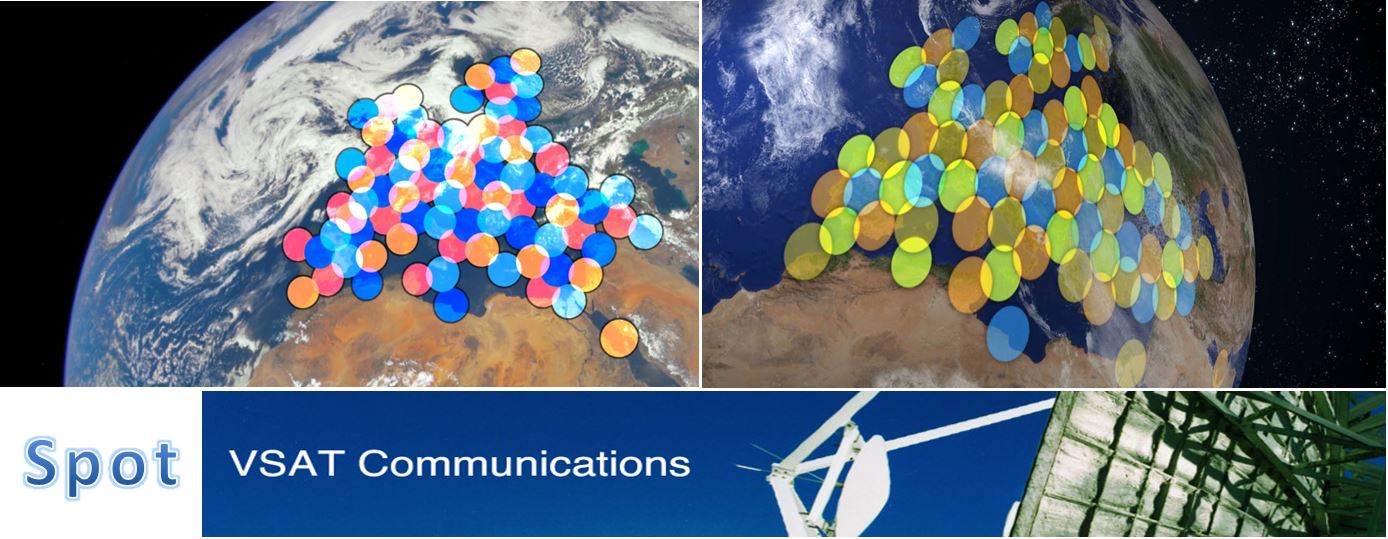
Is Maritime VSAT the best option ?
One of the very first questions to ask when assessing satellite communication options is whether VSAT (Very Small Aperture Terminal) or MSS (Mobile Satellite Services) is the best option for your needs. it’s important to understand what VSAT is and what alternatives are available. Maritime companies interested in upgrading or developing their satellite communications to VSAT will be faced with a wide range of options and alternatives.
A clear understanding of the technology available is critical in ensuring you make the best decision.With a VSAT solution, business critical applications can be run onboard since unlimited bandwidth is included within the fixed monthly price. Instant access to more ‘data hungry’ applications, such as Local Area Networks, weather information, route planners, remote monitoring, etc. can offer significant improvements to operational efficiency.
As the VSAT solution may enhance your business performance ..
* Vessels will be part of your LAN (Local Area Network) on land
* Vessels can run many of the applications
* More effective maintenance planning, quality assurance can be executed onboard
* Crew can participate to the education and training
* Remote updates and maintenance of the onboard PC network and servers can take place
* Large video and photo files can be sent quickly
* Crew can participate in conference calls and video conferences
* Remote monitoring and control of fuel consumption can reduce fleet operational costs
B.Y.O.D. (Bring Your Own Device)
In today’s job market, crew are demanding greater access to the Internet and the shortage in skilled and qualified crew is forcing the industry to respond. Likewise, the ‘Bring Your Own Device – BYOD’ trend where staff use their own smartphones, tablets and laptops on an employer’s network is taking off at sea. According to researchers, revealed that a growing number of seafarers see on board Wi-Fi connectivity as essential in order to use their own devices aboard ships. social media, was highlighted as one of the most popular web destinations for crew whilst it was also revealed that many seafarers are prepared to pay for connectivity.
VSAT (Very Small Aperture Terminal) and MSS (Mobile Satellite Services)
Fleet and vessel operators are continuing to move towards VSAT solutions on Ku-band, C-band, and soon Ka-band over traditional L-band (MSS) communications. L-band solutions such as Iridium OpenPort & Pilot and Inmarsat FleetBroadband are now becoming common back-up solutions for ship owners using VSAT, but who still want connectivity in remote areas like the North and South Pole.
In recognising this increasing demand for VSAT and MSS solutions, Service Providers are more commonly now offering bundled solutions with VSAT packaged together with MSS back up. Some SPs even offer an ‘all-in-one’ type solution with VSAT, MSS, hardware and software. Even many new, faster MSS services cannot cost effectively support business critical operations today, in the same way that VSAT supports daily communications onboard.
With VSAT, vessels are always connected to the Internet and are not forced to use the system restrictively or limit access when a cost threshold is approaching, or worse, cease access all together when a limit is met.
VSAT Strengths
* Cost benefits of VSAT
* Crew Welfare
* VSAT Reliability
* VSAT Flexibility & Scalability
* Security (VPN)
* Fast Deployment
* Bandwidth Efficiency
* Support for Real time Applications
* Automatic Beam Switching
Communication costs are easier to predict and control with the fixed monthly charges associated with VSAT, as opposed to the pay-as-you-use system more commonly associated with MSS communications.Larger deployment of TDMA networks offers a comparable service to SCPC networks, but sharing and segmenting bandwidth across vessels (through TDMA) offers further
cost reductions.
Considerations when choosing a Service Provider:
* Geographic support available
* The size of the Service Provider
* The amount of experience they have
* How many years has the Provider existed - this can be an indication of their longevity and stability
* Owned Network or VNO (leased Network)
* Experience and knowledge
Considerations when choosing a Product:
* Customised or Standardised ?
* Bandwidth Allocation
* Cost Analysis
* Geographic coverage needs
* Onboard IT Applications
* Applications for Crew or Passengers
* Flexibility in contractual terms
Assumptions :
* Client will be invoiced monthly for the total monthly subscription. Client is responsible for collecting from crew or deducting usage from wages in case the client wish to charge crew for the internet.
* Voice is excluded from monthly subscriptions rates.
* All Hardware and Software below are needed for complete internet package.
Spot Beam Coverages and Satellites :
|
Eutelsat 10A at 10E

|
Eutelsat 36B at 36E

|
Eutelsat 172A NEA

|
|
Eutelsat172A NPB

|
Eutelsat 172A SEPB

|
Eutelsat 172A SPB

|
|
Eytelsat 172A SWP

|
Intelsat 10-02 Europe at 1W Beam

|
Intelsat 907 at 27.6W Europe Beam

|
|
Intelsat IS21 at 58W AMB

|
Intelsat IS22 at 72.1E Beam

|
Intelsat IS22 at 72.1E MB

|
|
NSS7 at 20W CAB

|
Satmex 8 at 116.8W CB

|
SES-4 at 22W Beam

|
|
SES4 at 22W SCB

|
Superbird C2 SE Asia at 144E Beam

|
T11N at 37.6W AB (AOR)

|
|
T11N at 37.6W AB (AOR)

|
TelstarT11n at 37.6W US & CB

|

|